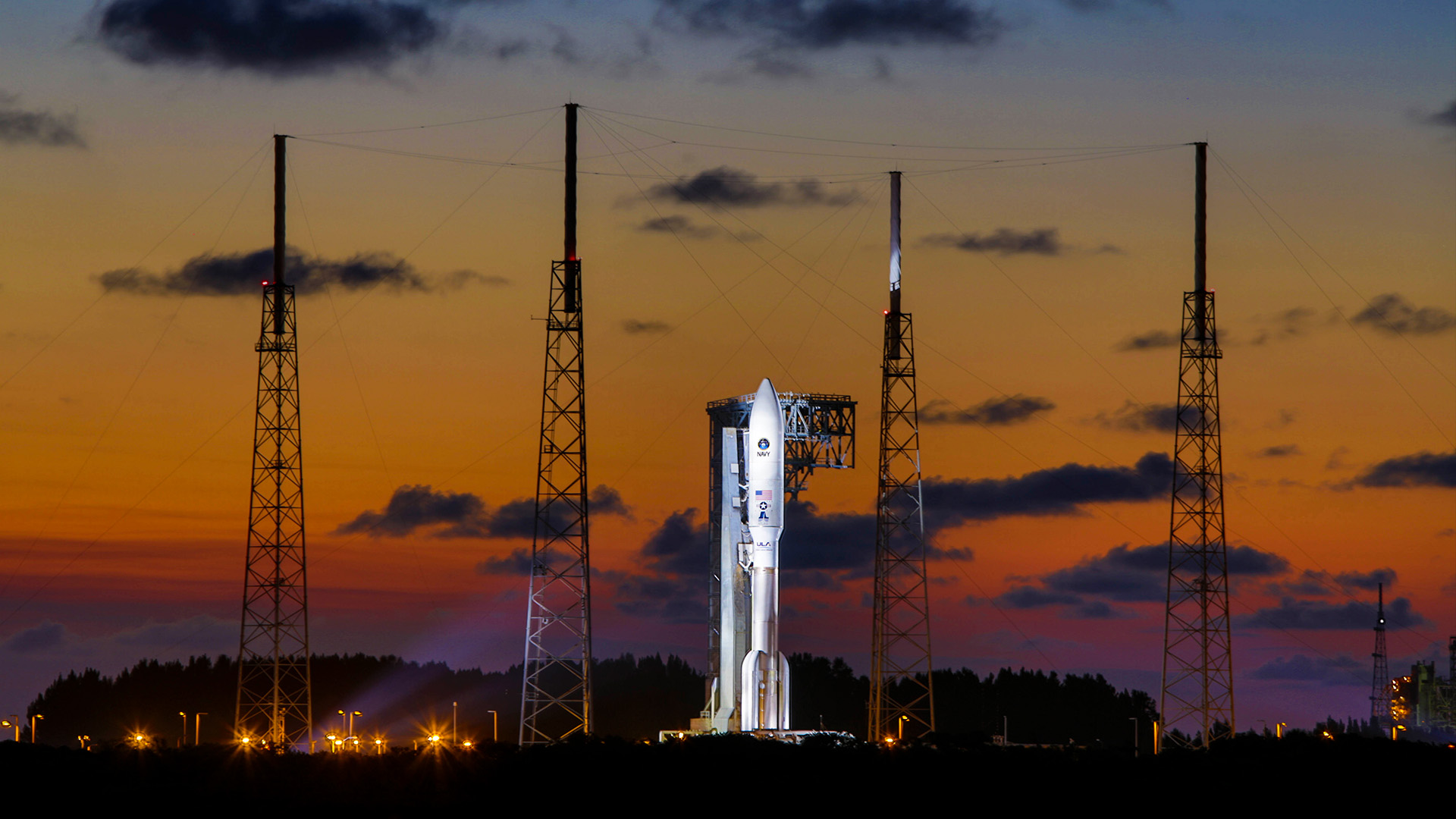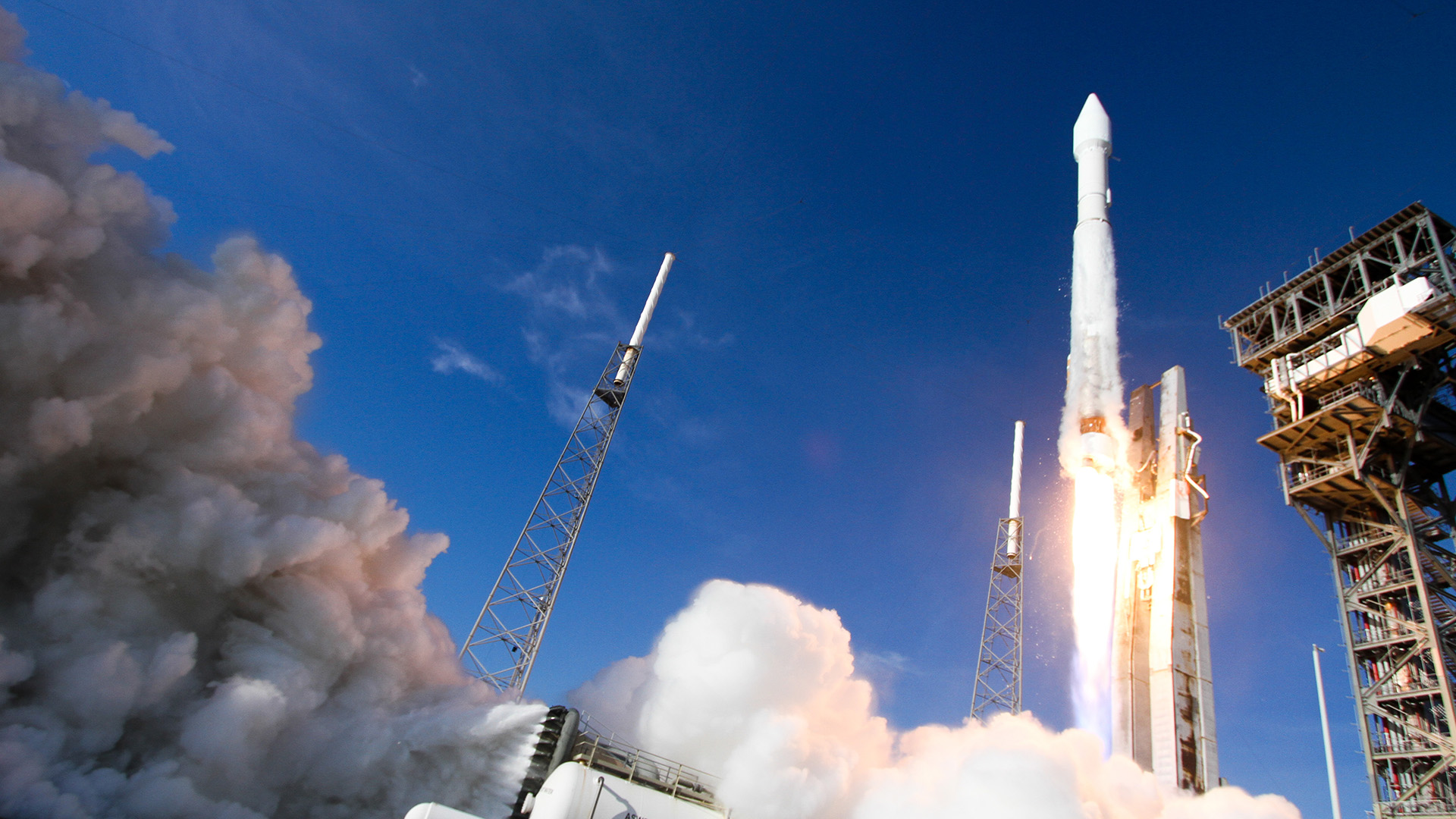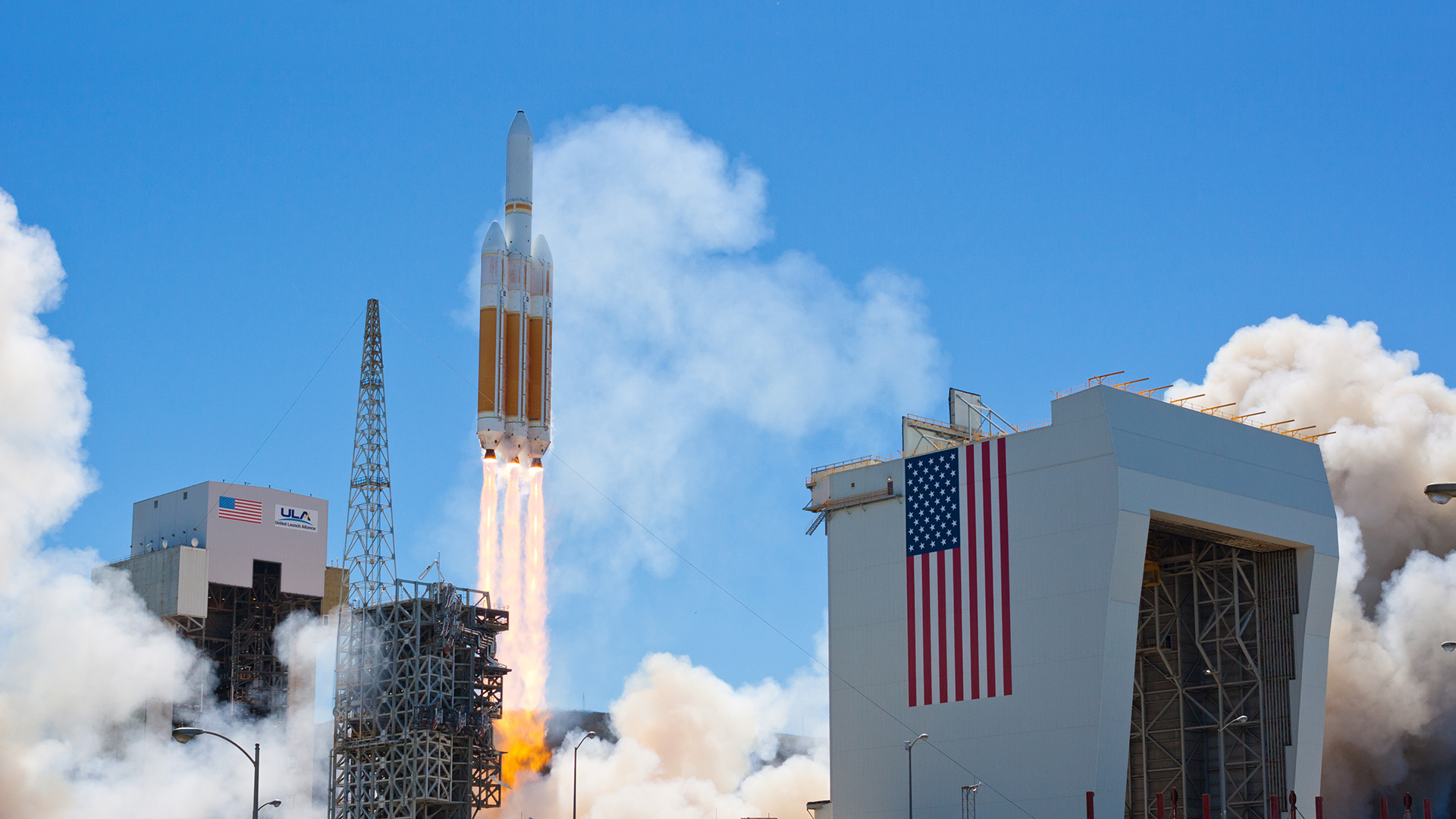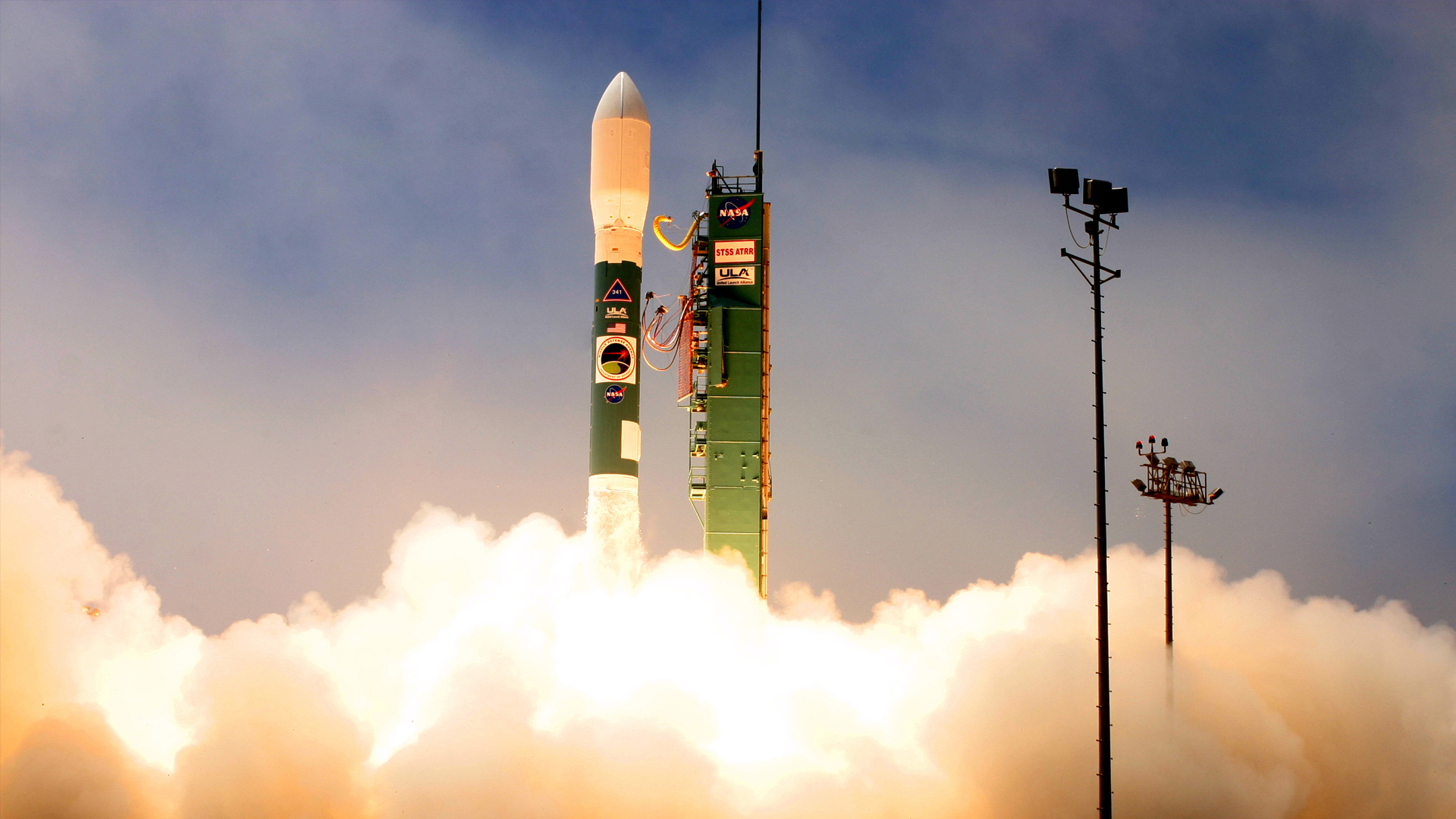Missions
Next LaunchUnited Launch Alliance Launches Second Successful Mission for U.S. Air Force in Just Nine Days
Delta IV WGS-5 Mission Booklet
Cape Canaveral Air Force Station, Fla., (May 24, 2013) – A United Launch Alliance (ULA) Delta IV rocket successfully launched the fifth Wideband Global SATCOM (WGS-5) satellite for the U.S. Air Force at 8:27 p.m. EDT today from Space Launch Complex-37. This mission launched just nine days after ULA successfully launched the GPS IIF-4 satellite last Wednesday, May 15.
"United Launch Alliance and our many mission partners continue to focus on mission success, one-launch-at-a-time,” said Jim Sponnick, ULA vice president, Mission Operations. “We are honored to work with such a strong industry and government team and deliver another critical communication capability to orbit to support our nation’s warfighters throughout the world.”
This mission was launched aboard a Delta IV Medium-plus configuration vehicle using a single ULA common booster core powered by a Pratt & Whitney Rocketdyne (PWR) RS-68 main engine, along with four ATK GEM 60 solid rocket motors. The five-meter diameter upper stage was powered by a PWR RL10B-2 engine with the satellite encapsulated in a five-meter diameter composite payload fairing. The WGS-5 launch marked the third flight of the Delta IV medium+ (5,4) configuration and the 22nd flight of the Delta IV family of launch vehicles.
This was the first Delta IV launch following the low engine performance that was identified on the successful Global Positioning System (GPS) IIF-3 launch last October. Although the GPS IIF-3 spacecraft was accurately placed into the required orbit, ULA, Pratt & Whitney Rocketdyne (PWR) and our U.S. Air Force teammates embarked on an investigation to determine why the upper stage engine performance was lower than expected. Prior to this mission, rigorous hardware inspections along with vehicle and operational design modifications were implemented to prevent a recurrence of the fuel leak in the RL10 engine that was the direct cause of the low engine performance on the GPS IIF-3 launch.
“The team has worked tremendously hard and exceptionally well to complete a robust investigation and get us to a successful launch today,” said Sponnick. “We sincerely thank the PWR team and our customer community for working with us throughout the investigation and flight clearance process, as well as the involvement from senior industry technical advisors.”
Wideband Global SATCOM provides anytime, anywhere communication for the warfighter through broadcast, multicast, and point to point connections. WGS is the only military satellite communications system that can support simultaneous X and Ka band communications.
ULA's next launch is the Atlas V MUOS-2 mission for the U.S. Navy scheduled for July 19, from Space Launch Complex-41 at Cape Canaveral Air Force Station, Fla.
The EELV program was established by the United States Air Force to provide assured access to space for Department of Defense and other government payloads. The commercially developed EELV Program supports the full range of government mission requirements, while delivering on schedule and providing significant cost savings over the heritage launch systems.
ULA program management, engineering, test, and mission support functions are headquartered in Denver, Colo. Manufacturing, assembly and integration operations are located at Decatur, Ala., and Harlingen, Texas. Launch operations are located at Cape Canaveral AFS, Fla., and Vandenberg AFB, Calif.
For more information on ULA, visit the ULA Web site at www.ulalaunch.com, or call the ULA Launch Hotline at 1-877-ULA-4321 (852-4321). Join the conversation at www.facebook.com/ulalaunch and twitter.com/ulalaunch.





